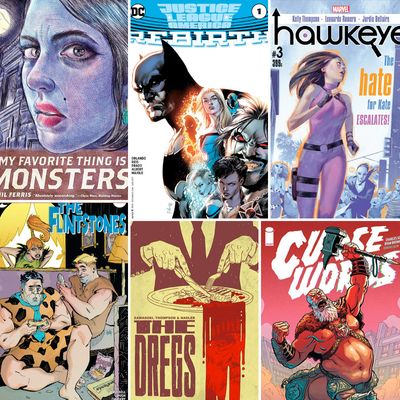
Each month, Abraham Riesman offers recommendations of comics, including book-length graphic novels, comics-format nonfiction, and ongoing series. With any luck, at least one of them will be a match for you.
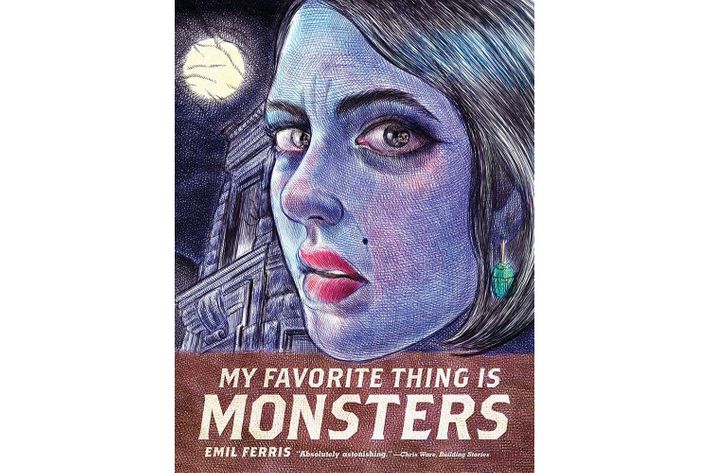
My Favorite Thing Is Monsters, Book One by Emil Ferris (Fantagraphics)
The comics medium can always use more entry points for newbies and skeptics; books that are thrilling, accessible, and self-contained, and that demonstrate the unique strengths of the form. Fun Home, Maus, Watchmen, and Persepolis all serve that function, and now there’s a new work to add to that pantheon: Emil Ferris’s debut graphic novel, the astounding My Favorite Thing Is Monsters. It’s a first-person narrative about a sullen girl in late-’60s Chicago who investigates the suspicious death of her upstairs neighbor and finds herself going down the rabbit hole of the woman’s past in Nazi Germany.
The plot would make for a great movie or prose novel, but what catapults the book into best-of-the-year territory is the way Ferris visualizes this preadolescent mystery, which simply couldn’t be done in any other medium. The whole book is done in the form of pages in a spiral-ring notebook, with urgent lettering and ominous drawings ostensibly penned by the narrator. The result is a thick, sumptuous feast of unforgettable sketch-mark visuals and sonorous text (e.g. “Walking into a warm steamy diner during a Chicago winter is like going from Alaska to a tropical country where the president is a giant onion ring who smothers you with greasy bear hugs while chain-smoking”). Good thing this is only book one, as Ferris is definitely someone to watch.
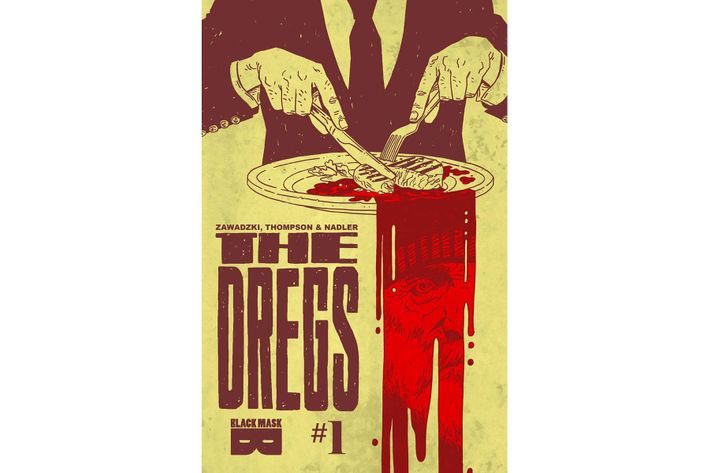
The Dregs by Zac Thompson, Lonnie Nadler, Eric Zawadzki, and Dee Cunniffe (Black Mask)
One of the many things that the Japanese comics industry does better than its American counterpart is gore. We don’t have enough of it here! Perhaps it’s the legacy of the censorious and thankfully defunct Comics Code Authority, which effectively killed the obscene horror-comics genre in the mid-1950s, but we don’t have the tradition of guro that keeps the manga industry lively. Luckily, we can now turn to The Dregs for a gruesome quick fix. A curious marriage of Sweeney Todd and The Caveman’s Valentine, it follows a homeless drug addict as he stumbles across a sinister workshop that turns the flesh of Vancouver’s homeless population into meat for high-end cuisine. Zac Thompson and Lonnie Nadler’s Chandler-referencing inner monologues sizzle, but the real show is the horrifically tactile artwork from Eric Zawadzki and Dee Cunniffe. Don’t read this on a full stomach.
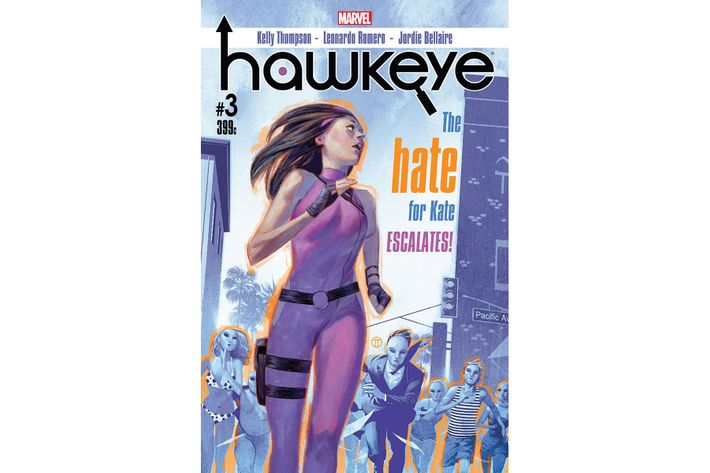
Hawkeye by Kelly Thompson, Leonardo Romero, and Jordie Bellaire (Marvel)
It’s been a good few years for Marvel’s premiere archers, Hawkeye and Hawkeye. What, you didn’t know there are two Hawkeyes? If that’s the case, catch up on the last few runs and you’ll learn all about the teamwork of the traditional holder of the moniker, Clint Barton, and his protégé turned colleague, 20-something Kate Bishop. The latest series follows Kate, who has struck out on her own as a private eye in Los Angeles and is finding that the detective life isn’t as glamorous as it looks in the movies. Kelly Thompson clearly feels a deep passion for her protagonist and infuses her with stubborn, condescendingly vulnerable charm. Leonardo Romero’s pencils are as kinetic as they are adorable, and any comic colored by Jordie Bellaire is a comic worth gawking at.

Spaniel Rage by Vanessa Davis (Drawn + Quarterly)
DIY autobiographical comics are a bit out of fashion these days, but they were still flourishing in the early aughts, and one of the sub-genre’s standout creators in that period was Vanessa Davis. Drawn + Quarterly has collected her work from 2003–4 in a new bound volume, and it’s a welcome blast from the past. Davis’s work is distinctively crude, outlined and shaded with simple graphite pencils. It eschews panels in favor of untethered self-portraiture that hopscotches across the page. Her vignettes sketch out a woman quietly and self-effacingly navigating the rocky waters of young adulthood, fretting over friendships, relationships, and the difficulties of pursuing the arts while working a day job. Those struggles may sound mundanely universal, but the frank, personal specificity of their depiction keeps you gripped.

Curse Words by Charles Soule, Ryan Browne, Michael Garland, and Michael Parkinson (Image)
At this point in human history, it’s hard to find new things to say about wizards, but Charles Soule and Ryan Browne have risen to the occasion. Curse Words is a pulpy, quippy potboiler about a wizard named, uh, Wizord, who gets sent to Earth for nefarious purposes and, finding that he rather likes the place, decides to renounce his evil ways and become a two-fisted do-gooder. Well, maybe “good” isn’t the right word. He’s still a bit of a jerk, and for the right price, he’ll grant any wish you have (as long as it doesn’t involve cures, wars, or love — a man’s got to have a code, after all), but the bad guys tend to get “be careful what you wish for” outcomes for their magical requests. In the meantime, the shades-wearing, teeth-gritting Wizord does battle with his former masters, and the artwork depicting their sorcery-saturated clashes is somehow both breathtaking and endearingly goofy. Plus, Wizord has a talking koala sidekick named Margaret, and if you don’t want to read about a talking koala sidekick named Margaret, I just don’t know what to say to you.
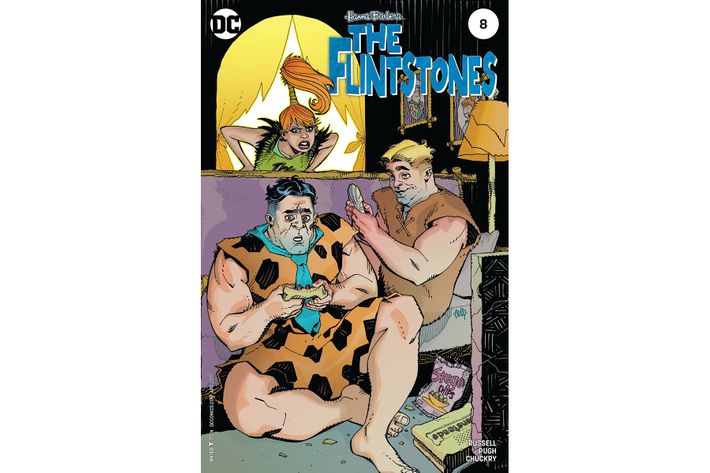
The Flintstones by Mark Russell, Steve Pugh, and Chris Chuckry (DC)
Wait, wait, hear me out. When DC Comics announced last year that it was going to publish a line of ongoing series based on various classic Hanna-Barbera cartoons, industry watchers were understandably skeptical. I mean, do we really need more nostalgia content? Then the books started publishing and, lo and behold, they’re good. One of the best is The Flintstones, which uses the unbelievably silly tropes of the titular cartoon (animal appliances, terrible puns, ludicrous anachronisms, the Great Gazoo, etc.) to lay out a series of vicious satirical tales. Mark Russell has crafted stories that tackle social ills ranging from spring break and religious fundamentalism to PTSD and the legacy of Native American genocide. Yet somehow, it feels light and humane, largely thanks to Steve Pugh’s pencils, which manage to make Fred, Barney, and their cohort look realistic without plunging into the terrifying uncanny valley of, say, The Flintstones in Viva Rock Vegas. In an ideological age that feels increasingly prehistoric, our ancestral cousins in the town of Bedrock glare at us through a distant mirror.
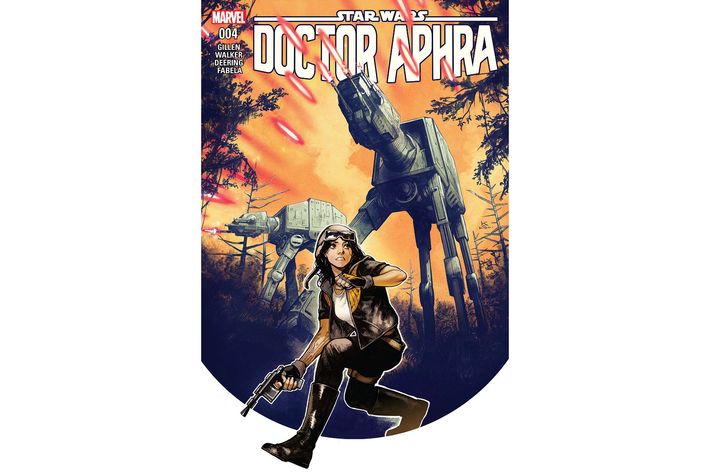
Doctor Aphra by Kieron Gillen, Kev Walker, and Antonio Fabela (Marvel)
As Vulture readers will know, we were big fans of Kieron Gillen’s run on Marvel’s Star Wars spinoff comic Darth Vader. That story was wisely contained, opting to reach a clean ending rather than overstaying its welcome, but Gillen thankfully decided to create a spinoff of his spinoff in the form of Doctor Aphra. Drawn by Kev Walker and colored by Antonio Fabela, the new series stars the titular doctor, a relentlessly cynical archaeologist who traverses the stars with a pair of gleefully murderous droids. As one would expect with Gillen, the dialogue is impeccable, nimbly snapping between the darkly humorous and the simply dark; Walker and Fabela’s visuals do the same. Aphra’s a new addition to the canon and she feels wholly unlike anyone else in it, providing us with a plebeian and profoundly fatalistic lens through which we can gain new perspective on the venerable Galaxy we know and love.
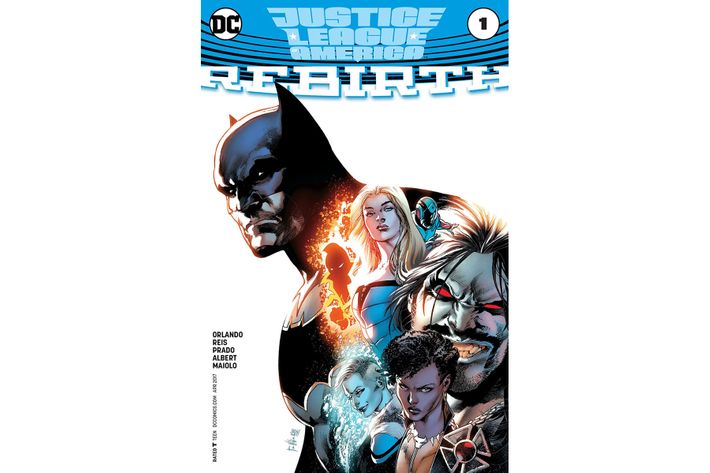
Justice League of America by Steve Orlando, Ivan Reis, Oclair Albert, Joe Prado, and Marcelo Maiolo (DC)
This fall will see the release of DC Entertainment’s nervously anticipated movie Justice League, a team-up saga that brings together some of the biggest names in the DC canon: Batman, Superman, Wonder Woman, Aquaman, the Flash, and Cyborg. So shout-out to DC for opting not to make their comic about the team subordinate to those filmic concerns; instead, they’re about to debut the weirdest comic-book Justice League lineup in a generation. The new Justice League of America will feature a team staffed by only one A-lister — Batman — and otherwise consisting of relative back-benchers Killer Frost, Black Canary, the Ray, Vixen, the Atom, and intergalactic bad boy Lobo.
It’s a risky pitch, but writer Steve Orlando seems up to the task, having established himself in recent years as one of the industry’s brightest young scribes, and anyone who follows the printed superhero economy should be overjoyed that Ivan Reis is on penciling duty, as he’s been on a dazzling streak as of late, especially in his issues of recent DC landmark The Multiversity. One of the superhero genre’s greatest assets is the concept of rotating casts in super-teams, which allow creators to toss a bunch of volatile characters into one place and see what kind of chain reaction occurs — and Justice League of America promises to be quite the chemistry experiment.

